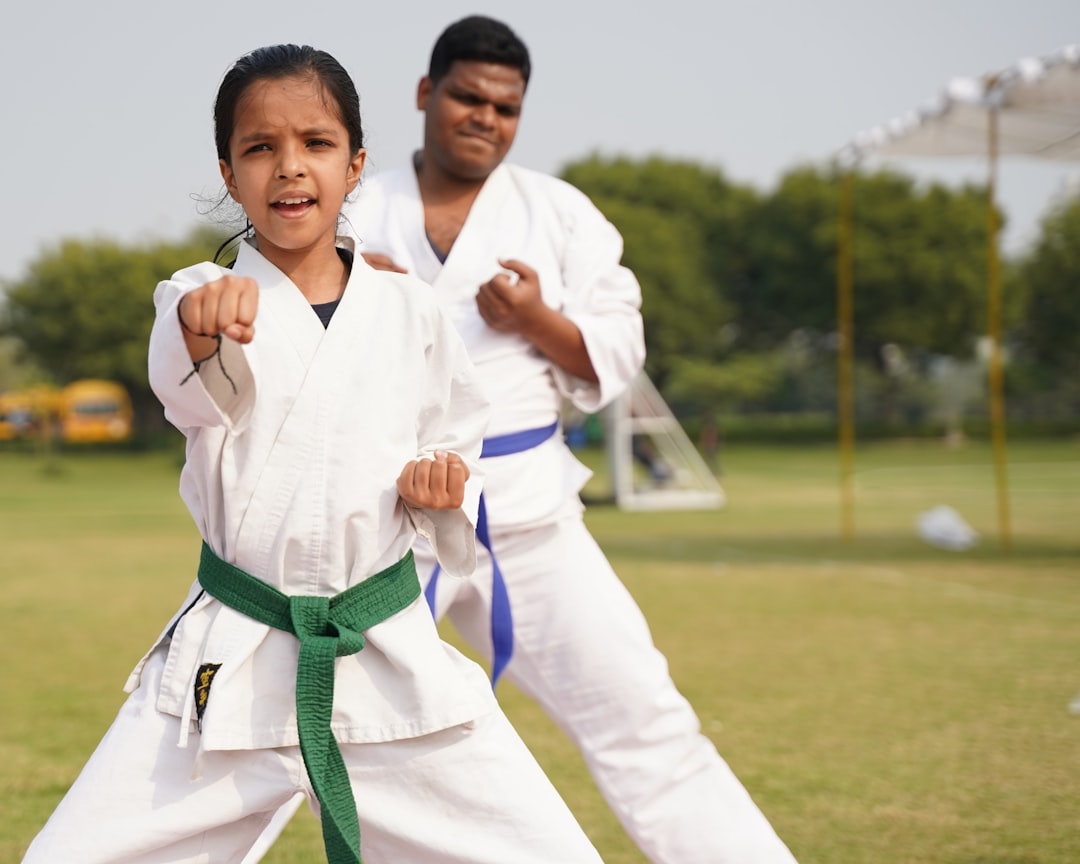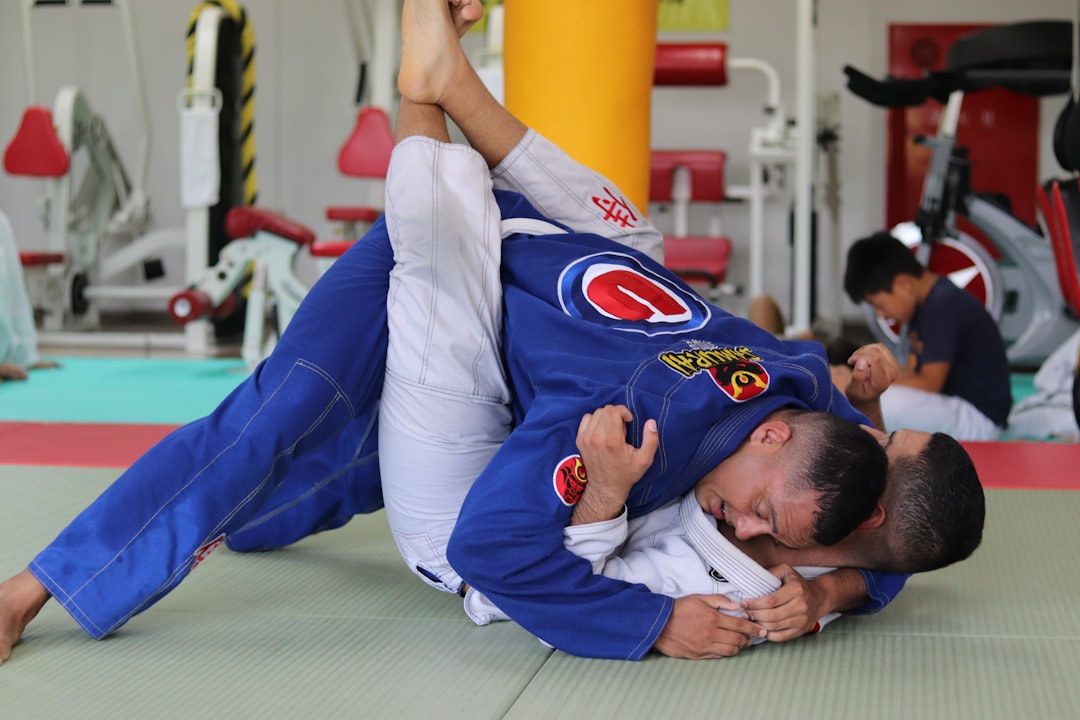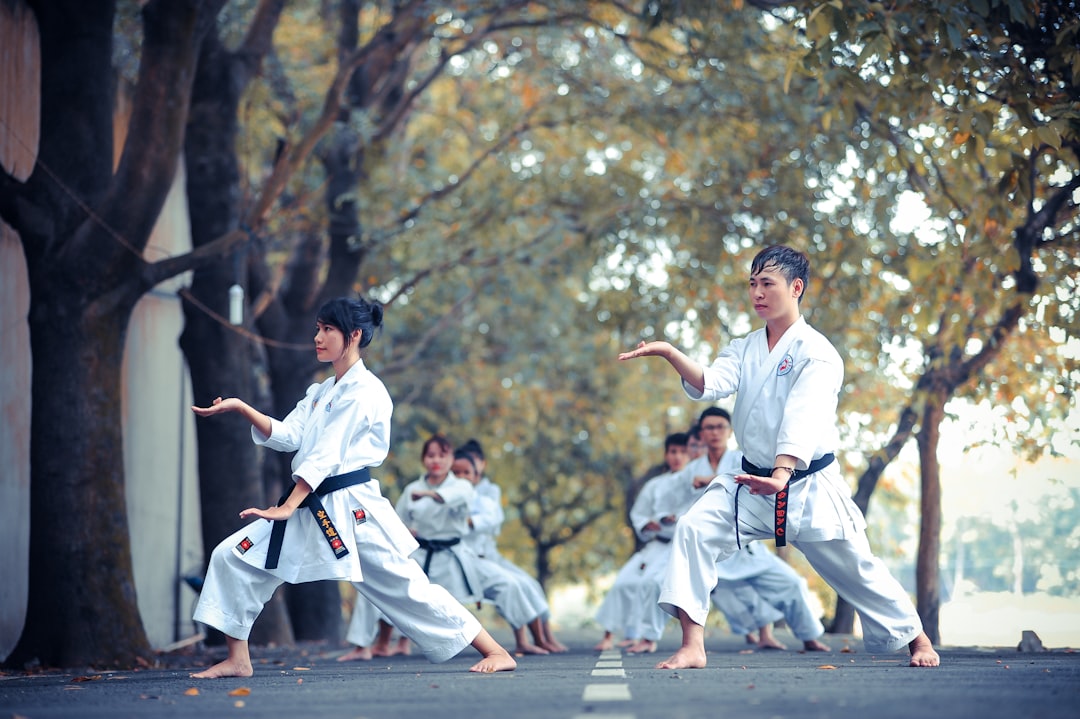Choosing the right karate gi is crucial for effective home training, as it ensures comfort, adherence to martial arts principles, and optimal technique performance. A high-quality gi made from durable yet breathable fabric like cotton or a blend is ideal, offering both unrestricted movement and resistance to wear and tear. It should be appropriate for your local climate, with heavier fabrics for cooler conditions and lighter materials for warmer temperatures. Selecting a gi that feels gentle on the skin and can endure intense training routines is important, as is considering pre-bleached features and ease of wear for quick transitions between exercises. A properly fitting gi, which neither hinders motion nor is overly loose, will support your movements without restriction and can be outfitted with reinforced stress points like the knees, elbows, and collar for added longevity. Regular maintenance involving mild detergent, air drying, and flat storage will keep your gi in excellent condition, ensuring a consistent and rewarding home karate training experience.
welcome to our exploration of traditional martial arts attire. In this comprehensive guide, we delve into the significance of the Karate uniform, commonly referred to as a Gi. Whether you’re training Karate at home or in a dojo, understanding the key elements that constitute a quality Gi is essential for optimal performance and comfort. We will cover everything from fabric selection to maintenance tips, ensuring your training garb not only supports your practice but also stands up to the rigors of consistent use. Let’s embark on this journey together, as we unravel the nuances of the Karate uniform and enhance your home training experience.
- Karate Uniform Essentials: Choosing the Right Gi for Training at Home
- Gi Fabric, Fit, and Features: Key Elements of a Quality Karate Uniform
- Maximizing Your Home Karate Practice: Wearing and Maintaining Your Gi Effectively
Karate Uniform Essentials: Choosing the Right Gi for Training at Home

When training karate at home, selecting the appropriate gi is crucial for both comfort and proper technique execution. A gi, which is the traditional martial arts uniform, not only serves as a garment but also represents the discipline and respect inherent to the practice. To train karate effectively from the comfort of your own space, it’s essential to choose a gi that accommodates your movements without hindrance. Do you need a gi specifically designed for home training? Yes, the best gi for practicing karate at home is one that allows for complete range of motion and is made of a fabric that withstands frequent washing and wears well over time. Look for a gi with a weight that suits your climate; heavier cottons are preferable in cooler regions, while lighter options are ideal for warmer environments. Does the material make a difference when practicing karate at home? Absolutely, the right material not only feels more comfortable against your skin but also holds up to the demands of rigorous training sessions. Additionally, consider a gi with pre-bleached options to save time on maintenance and one that is easy to put on and take off, which is particularly beneficial when transitioning between exercises or during intense practice sessions. Ensuring you have the right gear, such as a well-fitted karate gi, can significantly enhance your training experience at home, allowing you to focus on perfecting your techniques with confidence and comfort.
Gi Fabric, Fit, and Features: Key Elements of a Quality Karate Uniform

When practicing karate at home or in a dojo, donning the right attire is crucial to ensure comfort and proper technique execution. A quality karate uniform, commonly known as a gi, is not just a garment but a key element that supports a practitioner’s movements and reflects respect for the martial art. The fabric of the gi plays a pivotal role in its functionality; it should be both durable and lightweight, allowing for ease of movement while withstanding the rigors of training. Is the fabric of the gi breathable and resistant to wear and tear? A high-quality gi fabric is typically woven from cotton or a cotton blend, which provides both the needed structure and the flexibility necessary for performing karate moves effectively. Additionally, the fit of the uniform is significant; it must be neither too tight nor too loose. A well-fitted gi should contour to the body without hindering motion, ensuring that the practitioner’s movements are unrestricted during training karate at home or in a formal setting. How does one determine if the gi fits correctly? The ideal fit allows for a full range of motion, from deep bows to high kicks, without causing discomfort or snagging on edges. Lastly, a quality karate uniform often features reinforced stress points and precise stitching. These features enhance the longevity of the garment and provide additional support where it’s most needed. Are there reinforcements in areas prone to stress? Look for a gi with double-stitched seams and reinforced knees, elbows, and collar, which are common points of wear. These details contribute to the overall durability and longevity of the uniform, ensuring that it remains a reliable training partner as you progress in your karate practice.
Maximizing Your Home Karate Practice: Wearing and Maintaining Your Gi Effectively

When training karate at home, it’s crucial to wear appropriate attire that allows for full range of motion and comfort. A gi, the traditional martial arts uniform, is not only a staple in formal settings but also an essential component for practicing karate effectively at home. The gi provides a structured environment for your movements, helping you execute techniques with precision. It’s designed to accommodate the various stances and movements inherent to karate, ensuring you can train without restriction.
To maximize your home practice, consider how your gi fits and feels. Does it restrict your movement in any way? Is it the correct weight and fabric for your climate and personal comfort? Properly maintaining your gi is equally important. Regularly wash it after intense training sessions to remove sweat and odors, which can otherwise degrade the material or cause it to lose its shape. Additionally, avoid using harsh detergents that may damage the natural fibers of the gi, typically made from cotton or hemp. Following these practices will help extend the life of your karate uniform and maintain its integrity for consistent training sessions at home. How often should you wash your gi? The answer is after every practice session to keep it fresh and in good condition. What are some maintenance tips for your gi? Always use mild detergent, air dry it if possible, and store it flat to prevent creases and damage.
In wrapping up our exploration of the essentials in karate practice, particularly as it pertains to training at home, one crucial aspect that stands out is the significance of a well-chosen gi. This traditional garment not only facilitates optimal performance but also embodies the respect and discipline central to martial arts training. By understanding the fabric, fit, and features that define a quality karate uniform, practitioners can maximize their home training sessions, ensuring they are fully prepared for effective practice. Whether you’re new to karate or an experienced martial artist looking to refine your home set-up, selecting the right gi is a step towards honing your skills and upholding the tradition of this esteemed discipline. Remember to consider your personal needs and preferences when choosing your uniform to enhance your training experience.
